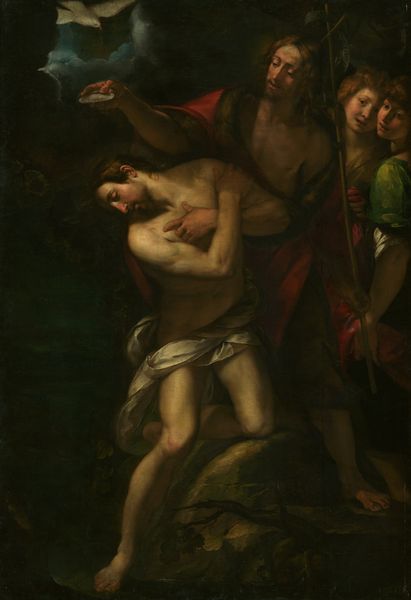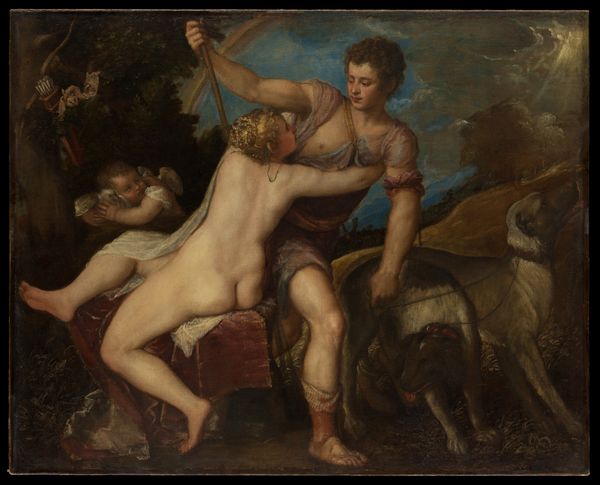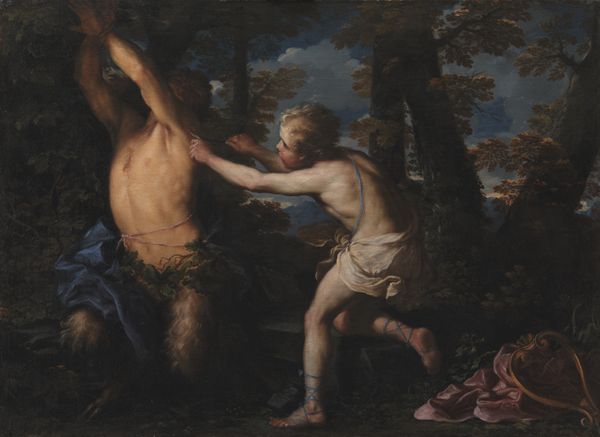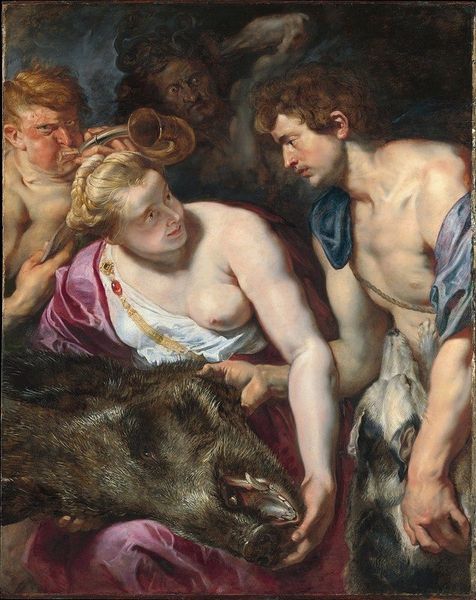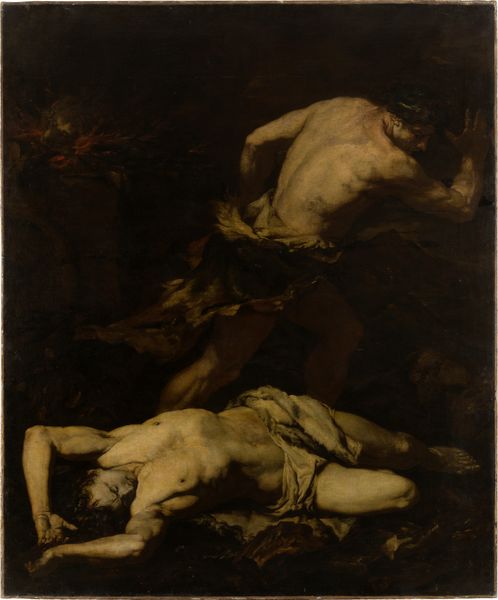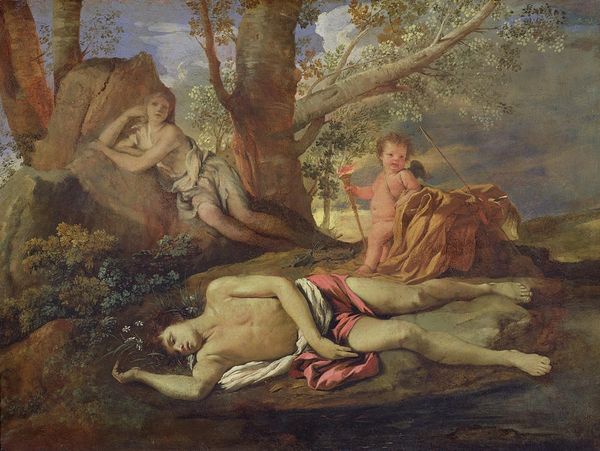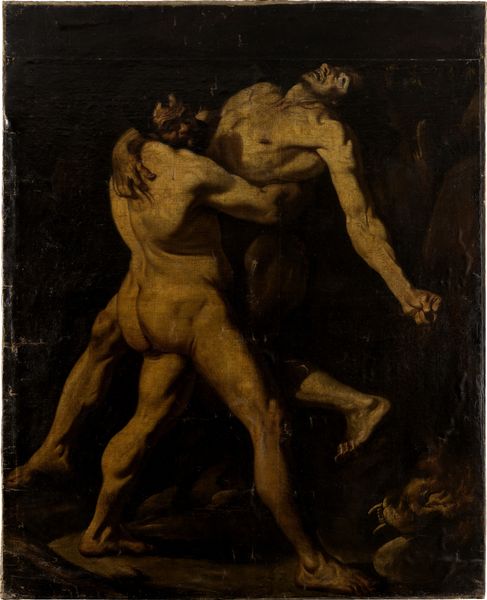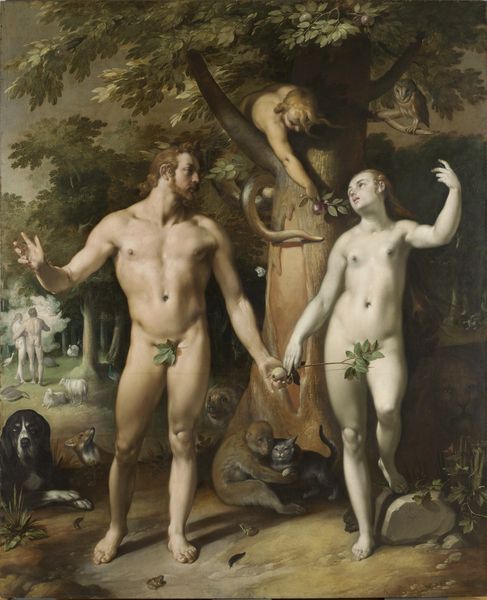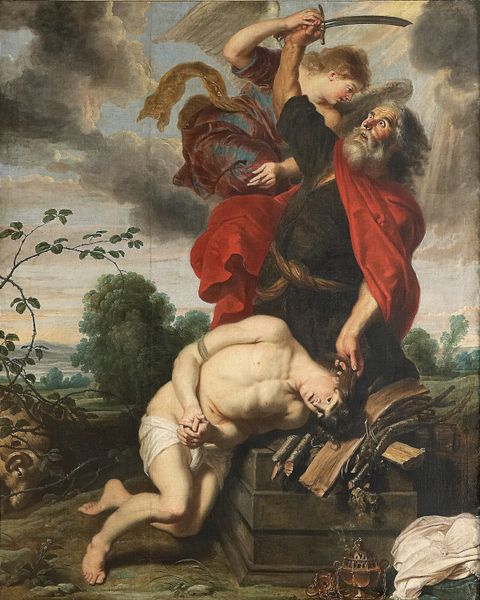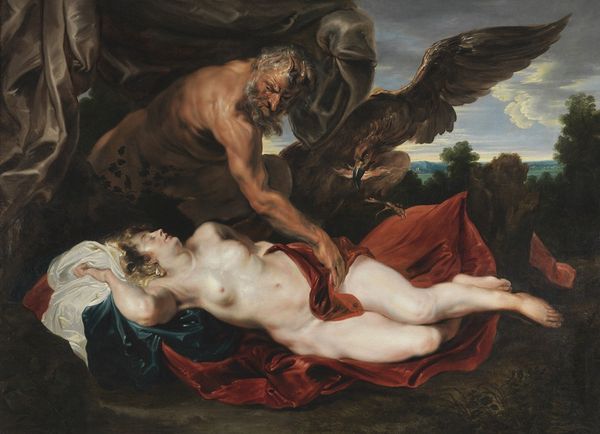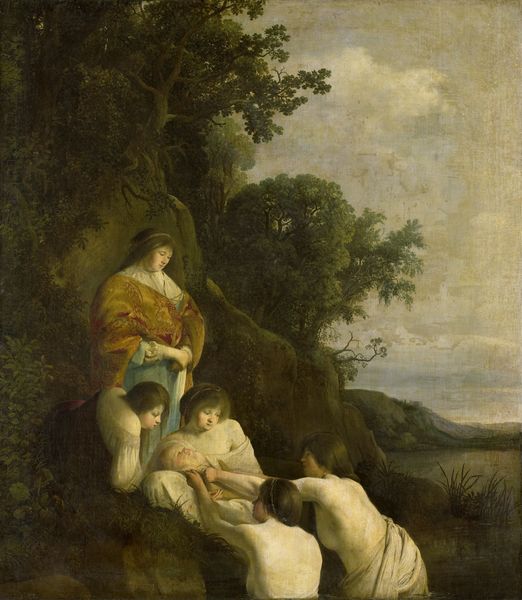
oil-paint
#
narrative-art
#
baroque
#
oil-paint
#
figuration
#
oil painting
#
underpainting
#
history-painting
#
italian-renaissance
#
realism
Dimensions: 206 cm (height) x 153 cm (width) (Netto)
Curator: Here we have Paolo De Matteis’s depiction of “Adam and Eve Lamenting over the Body of Abel,” dating from about 1715 to 1728. It’s a powerful work rendered in oil paint. Editor: Oh wow. Talk about heavy. You can feel the grief just radiating off this canvas. The somber mood is amplified by the dramatic lighting and the lifeless body of Abel. Curator: Absolutely. This painting exists within a specific historical and social context. De Matteis, painting during the Baroque period, taps into the anxieties and shifting theological interpretations concerning Original Sin, exploring the devastating consequences of transgression within the family structure, a direct result of the choices made in the Garden. It highlights themes of loss, guilt, and the dawn of human suffering. Editor: Yeah, that makes total sense. It really nails that moment of raw, agonizing grief. There's almost something voyeuristic about it. Like we're intruding on their most private horror. And did you notice the bones on the lower left? Curator: Indeed, a powerful inclusion. In placing those remnants near Abel’s corpse, De Matteis offers a rather bleak foreshadowing: death, now a part of the human experience, will extend beyond Abel. We might also consider how gender operates here, how we might perceive the active anguish of Adam versus the seemingly more internalized grief of Eve. Editor: Interesting. Personally, I see the positioning of Adam as pivotal. The hand thrown up to his head in anguish mirrors a classic theatrical gesture, but it also feels desperately human, like he's physically recoiling from the enormity of what's happened. It invites a real sense of pathos and immediate connection. It really punches you in the gut. Curator: And that visceral reaction, of course, speaks to the painting’s success within its own time, appealing to the emotions to convey a theological message, but its ability to affect us now points to the enduring legacy of these narratives. Editor: Makes you think about inherited trauma, doesn’t it? Well, that’s a conversation-starter if I ever saw one. Curator: It certainly does bring so many critical themes into sharp focus.
Comments
No comments
Be the first to comment and join the conversation on the ultimate creative platform.

